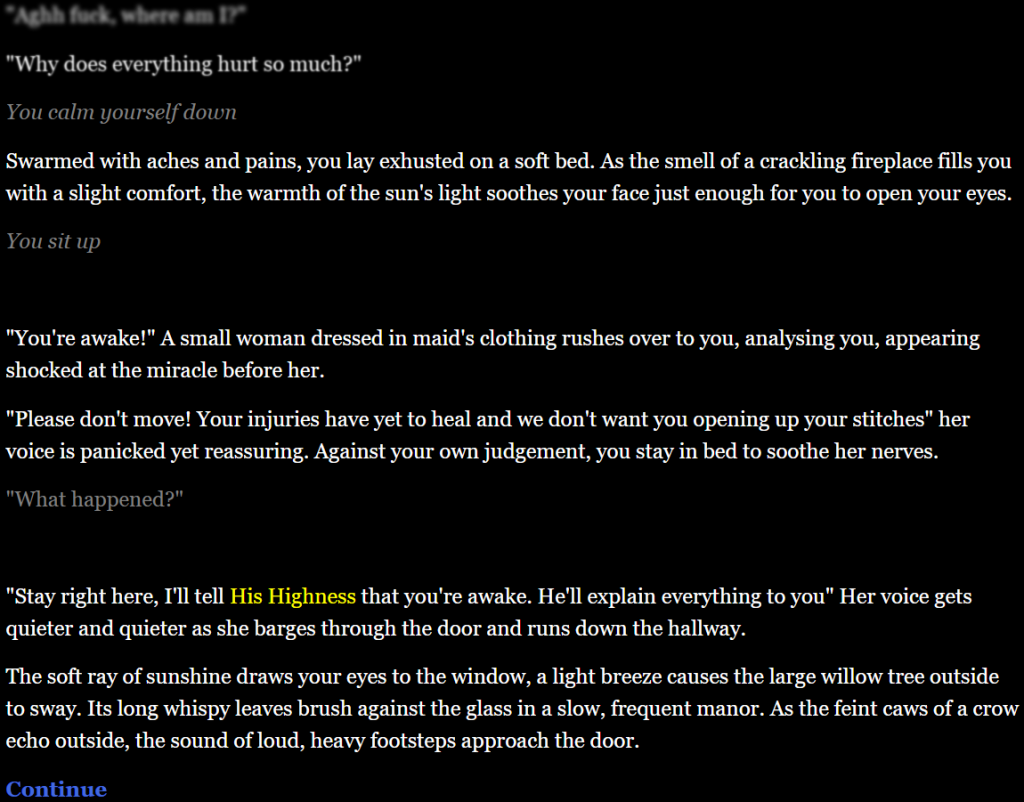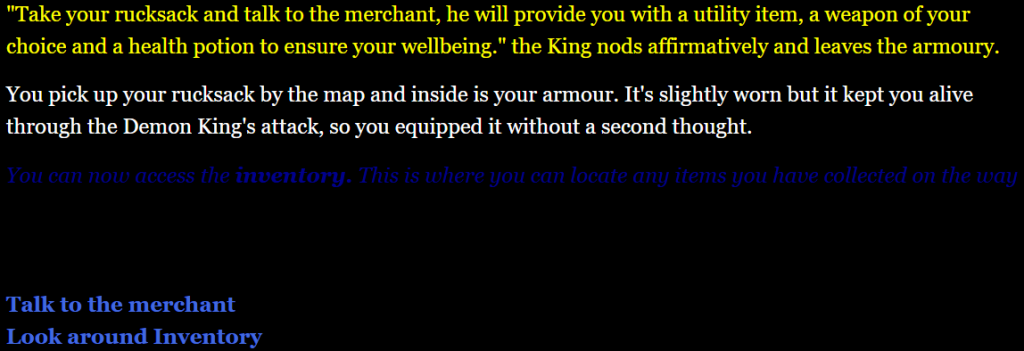Twine is an open-source tool for creating interactive, non-linear stories and text-based games. It allows users to design branching narrative games easily.
This video is a demo playthrough of the Twine prototype. Below this video will be spoilers for the Twine game, if you want to explore the game for yourself, there will be a download to it on my teams file. If the video is going too fast, feel free to pause it in order to read the text.
The following is the overall path and all of the passages in the twine prototype for Arcadia:

The Footer
A ‘Footer’ passage is a way to input certain links to passages in more than one passage consistently, I have used the footer passage in order to create links to the players inventory and map after they unlock them.


Introduction
The way the game works, is that the player will be given prompts that highlight themselves in blue when the cursor is hovered onto them. These prompts will provide further text in the passage, or lead the player to a new passage.

Explaining Passages
Passages will be colour-coded, white will be the narrator, or dialogue from side characters. The players inputs, thoughts and speech will be in grey. Other characters, such as The King will have their own colour to highlight their importance and allow the player to differentiate key NPCs.

Player Inputs
The player has different ways of interacting with the world and progressing the story, as seen in the passage below:
- Speech – Shown with speech marks (“How long have I been out?”)
- Thoughts – Shown with a slight shadow (No wonder my body feels like such crap)
- Actions – Shown with an italic text (You stand up)

The game is also able to ask the player for text as a prompt, which will be stored in the game as a string variable. In this case, the prompt is asking for the player’s name. However this could also be used for other variables down the line,

Making Choices
In many passages, the player will have various options to choose from, whether it be repling to an NPC or making choices about where to go etc. These actions are final once chosen and should not be back-tracked, as the outcome of the game could very well be dependant on them.

Hints/ Clues
Dark blue text with italics are used to notify the player about a specific event outside of the game’s story. Here it is used to let the player know that they are now able to access their inventory.

Achievements
For the sake of the joint event with year 1 at the Nutshell, I have implemented achievements that the player can go back and try to find to encourage the player to explore all the choices that are made available to them.

Item-dependant Events
For some events to be triggered, the player must have a certain item in their inventory. This is why choices are vital in this game in order to come across secrets that will uncover the hidden story of the real world, behind Arcadia.
In this case, the player must have picked the Telescope when prompted by the Merchant, which is shown by the ‘$hasTelescope’ boolean variable in the passage.

Combat
As this game is purely text-based, the damage taken is randomised between two set integers. Ths is done by creating a variable called ‘$___Damage’ and providing it with a number ‘(random: x,y)’ where x and y are both integers. This new variable is then deducted from the players current health ($Health) as seen in the passage below.
This damage taken can the be healed by saving at campfire or by consumables, such as food and potions. Consumables can be crafted by the player if they have the materials or bought directly from the merchant.

